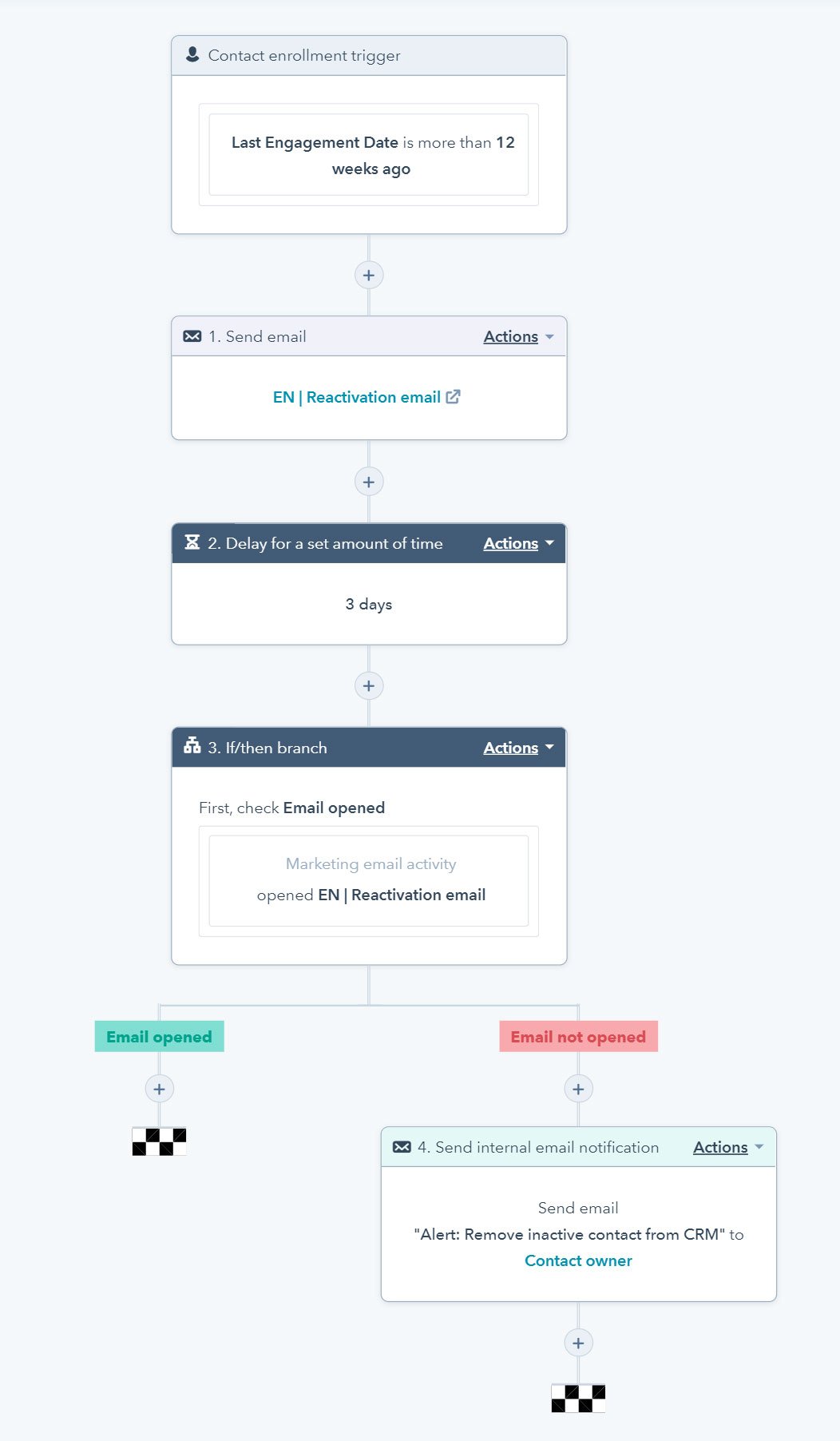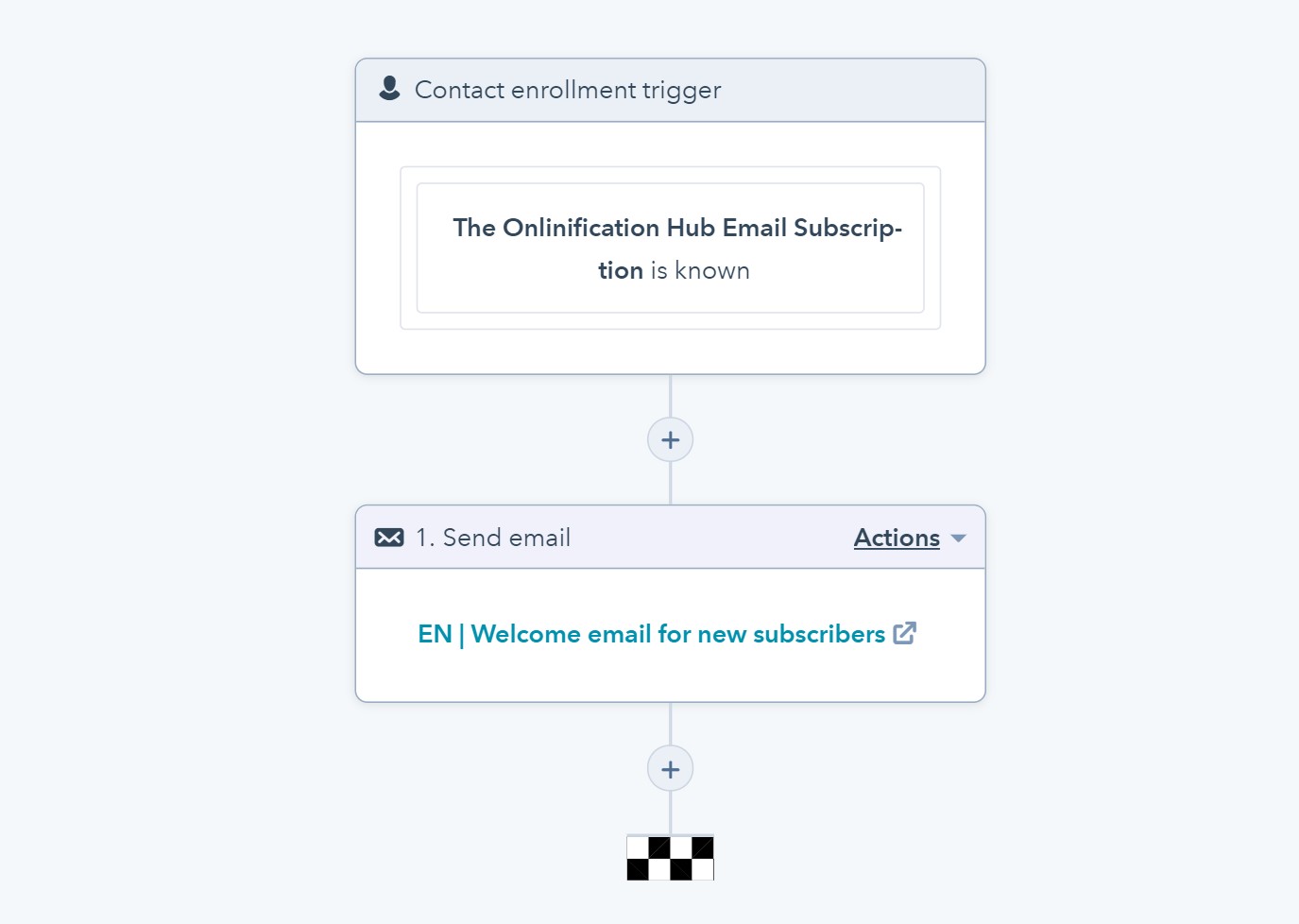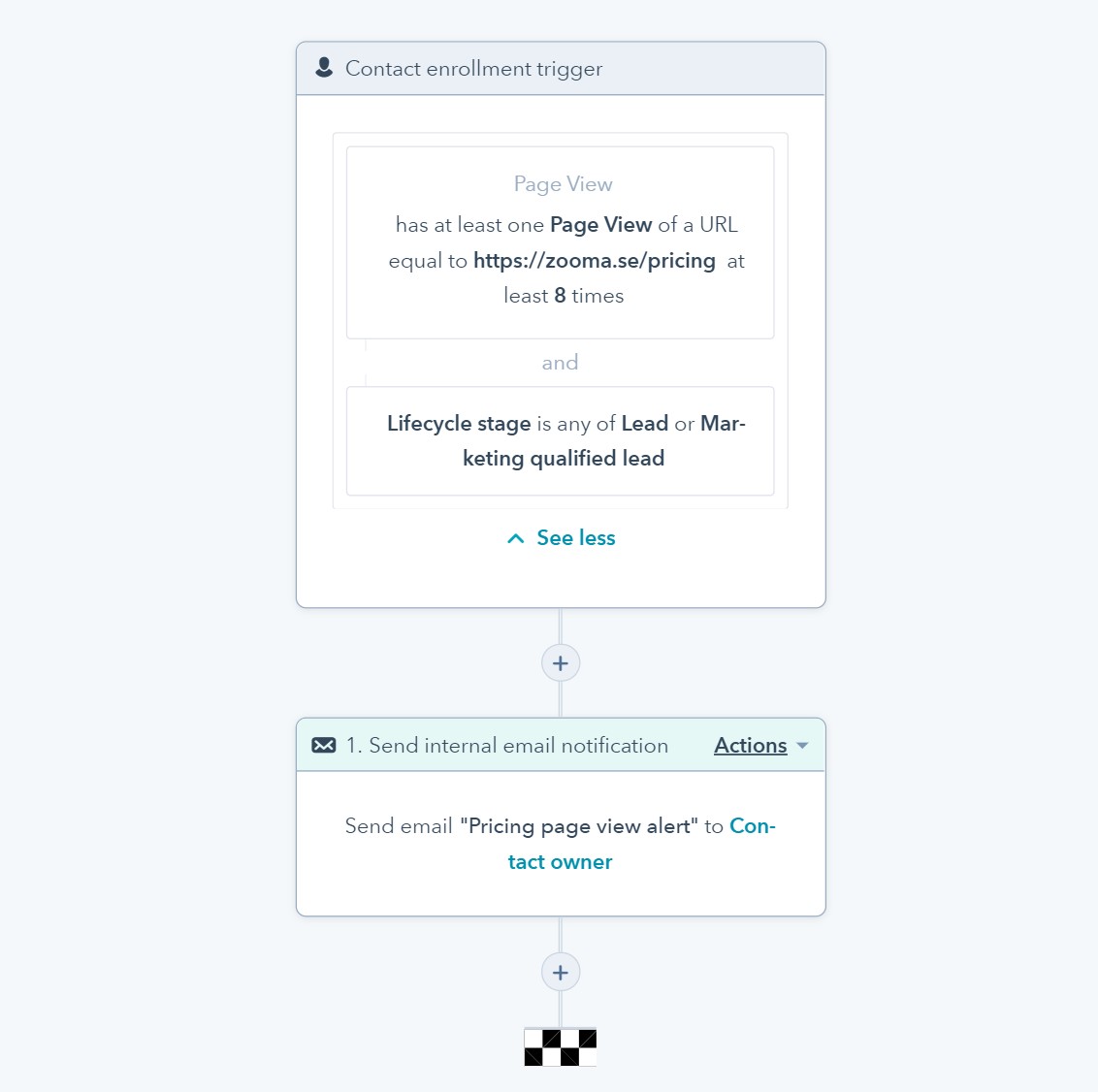- Learn
- The Onlinification Hub
- 6 Marketing automation examples to implement in your company
6 Marketing automation examples to implement in your company
By Doug Bolton

Marketing automation is a really-wide ranging tool that you can use to interact with your contacts in an almost endless number of ways. But there's also a few standard automation flows that you can set up quickly which can keep your contacts satisfied, engaged, and simplify your day at work.
In this article, I'll share some examples of marketing automation flows that we either currently use, or have used in the past. You've probably experienced some of them yourself in your private life.
All of them are pretty straightforward to set up, and you can tweak them to suit your style and offering as much as you want. The only prerequisite is that you actually have access to the data that you need to trigger them - for example, through a well-maintained CRM system that is connected to your automation tool. We use HubSpot for everything, so our CRM and automation tools are connected right out of the box.
Have you just started with HubSpot and need help with your Marketing automation?
1. Birthday (or anniversary) greetings
Email automation is a common use of marketing automation. If you store information about contacts' birthdays in your CRM, this is an easy one to create that all your contacts will appreciate. Simply create a generic birthday email, and use a date-centred workflow to send it to contacts on their birthdays. If you can, you can always include something extra - personalisation and even discount codes (if you work with e-commerce) are always appreciated.

Not every company stores this kind of data, but if you use a CRM system, you will store information about whether they're a customer or not. With this, you can set up a very similar workflow, to be triggered on the anniversary of the day the contact first became a customer.
2. Reactivation emails
Sometimes, contacts who were once engaged visitors (or even leads) fall away. They might have lost interest, they may have found another company that solves their problems better, or they may have simply forgotten about you. In many cases, all they need is a little nudge to get interested again - and you can use automation to do this.
Lots of CRM systems, including HubSpot, use cookies to store information about your contacts' activity on your site, whether it's page views, downloads or conversions. They might often also store data about when contacts received, opened and clicked in the emails you send them. All this data can be used for effective automated reactivation.
 This workflow sends a simple reactivation email after 12 weeks of inactivity. But the extra if/then branch detects whether the contact engages with the email, and tells the contact owner to remove them from the CRM if they don't.
This workflow sends a simple reactivation email after 12 weeks of inactivity. But the extra if/then branch detects whether the contact engages with the email, and tells the contact owner to remove them from the CRM if they don't.
By using a date trigger, you can automatically send a reactivation email a certain number of days, weeks or months after a contact's last interaction with you. For example, if a contact hasn't visited any page on your site in the last three months, you can trigger the email send. The content of the email can vary, but you can include an explanation of why they're receiving the email, and encourage them to start interacting with you again.
Hopefully, the contact will remember you exist and become an active visitor or lead once again. But even if they don't, you can use it as an opportunity to clean up your CRM. If the contact doesn't open this reactivation email after three months of inactivity, you can safely assume they're not interested in you anymore and you can remove them from your CRM.
3. Welcome emails
Everyone who creates content online wants more subscribers or newsletter signups. So when someone does hand over their information and subscribe to something, make sure to say thank you!
By triggering your automation flow when a contact becomes a subscriber, you can immediately send a welcome email thanking them for signing up and explaining what they can expect.

The workflow is triggered by a blog subscription, and the welcome email is sent immediately. Just remember not to enrol existing contacts when activating this workflow, or all your existing subscribers will receive the email as well.
It's a nice gesture, but it also makes your customer confident that they actually have signed up. Everyone's used an online form at some point and later found out it didn't submit properly. When the welcome email arrives in their inbox, they'll know that their subscription really has gone through.
4. Review and feedback requests
This is a very common marketing automation example. Whatever CRM you use, you'll likely use it to store information about recent purchases. This data can be used to send automatic requests for reviews and feedback. After someone's received delivery of the product or service they've bought from you, a simple email with an NPS survey or a review request can be sent - this could be anything from a few days to a few weeks after, depending on the product or service. You could even send another email six months later, to ask whether they're still satisfied.
This kind of automation allows you to build up valuable information about what your customers actually think of you. And if you follow up with contacts after they've replied, it could lead to further feedback sessions or case studies, which are even more valuable.
5. Internal workflows
There's plenty of opportunities for customer-facing automation, but it's just as useful within your company as well. Automatic internal alerts about contact behaviour, feedback and reviews and business requests can be set up fairly easily, and they can give you much greater visibility of your company's interactions with its contacts.
6. Alerts to sales reps
The triggers for alerts like these will be different depending on the nature of your business - but whatever conditions you choose, reps will benefit from more information about the behaviour of their customers and prospects.
If you have a pricing page, for example, you could send an alert to the relevant rep when a certain user makes a certain number of visits to the page, or fills in a form. Sales reps can also benefit from inactivity alerts, if customers haven't been in contact with them after a certain amount of time. Alerts relating to NPS responses and other types of feedback are hugely valuable, as are service alerts. If your products need to be serviced after six months of use, for example, an automatic alert can tell the sales rep to get in touch after six months have passed.

If you have the data that they rely on in place, all of these automation flows can be set up in under 30 minutes. And there's always the possibility to tweak and adjust the structure of the flows or the automated emails once you've gone live.
If you want to find out more about marketing automation and the other benefits it provides, take a look at our in-depth marketing automation guide. It's also available as an expanded PDF version below. Enjoy, and good luck!

Get the automation guide

Keep updated on thoughts, facts and knowledge!
Related
-
By Stellan BjörnesjöMarketing automation and CRM: The difference, and do you need both?
-
By Stellan BjörnesjöSales and marketing automation: How to successfully integrate them
-
By Anders BjörklundEmail marketing: Becoming data-driven
-
By Stellan BjörnesjöB2B marketing automation: Best practices
-
By Stellan BjörnesjöWhy is marketing automation important?
-
By Fredrik AbrahamssonBoost your lead generation with WCMS and Marketing Automation



